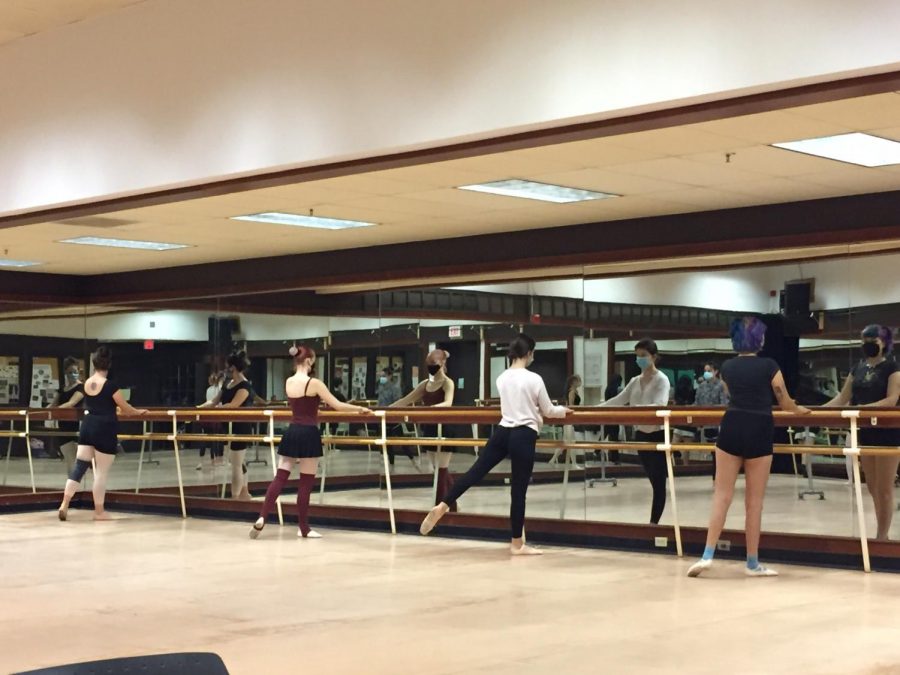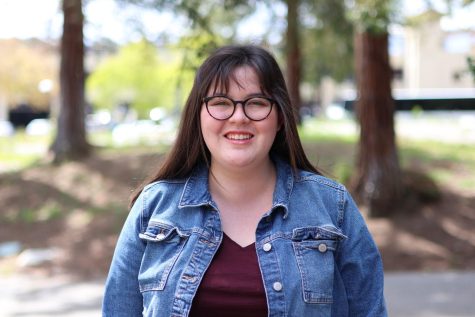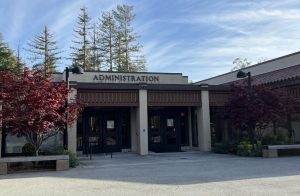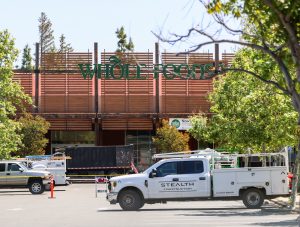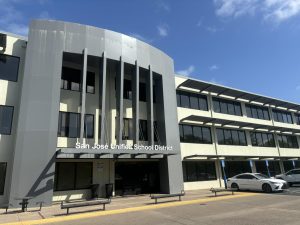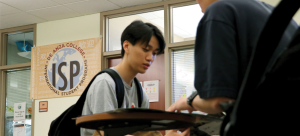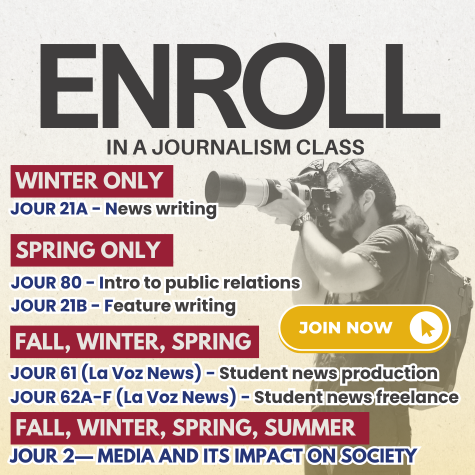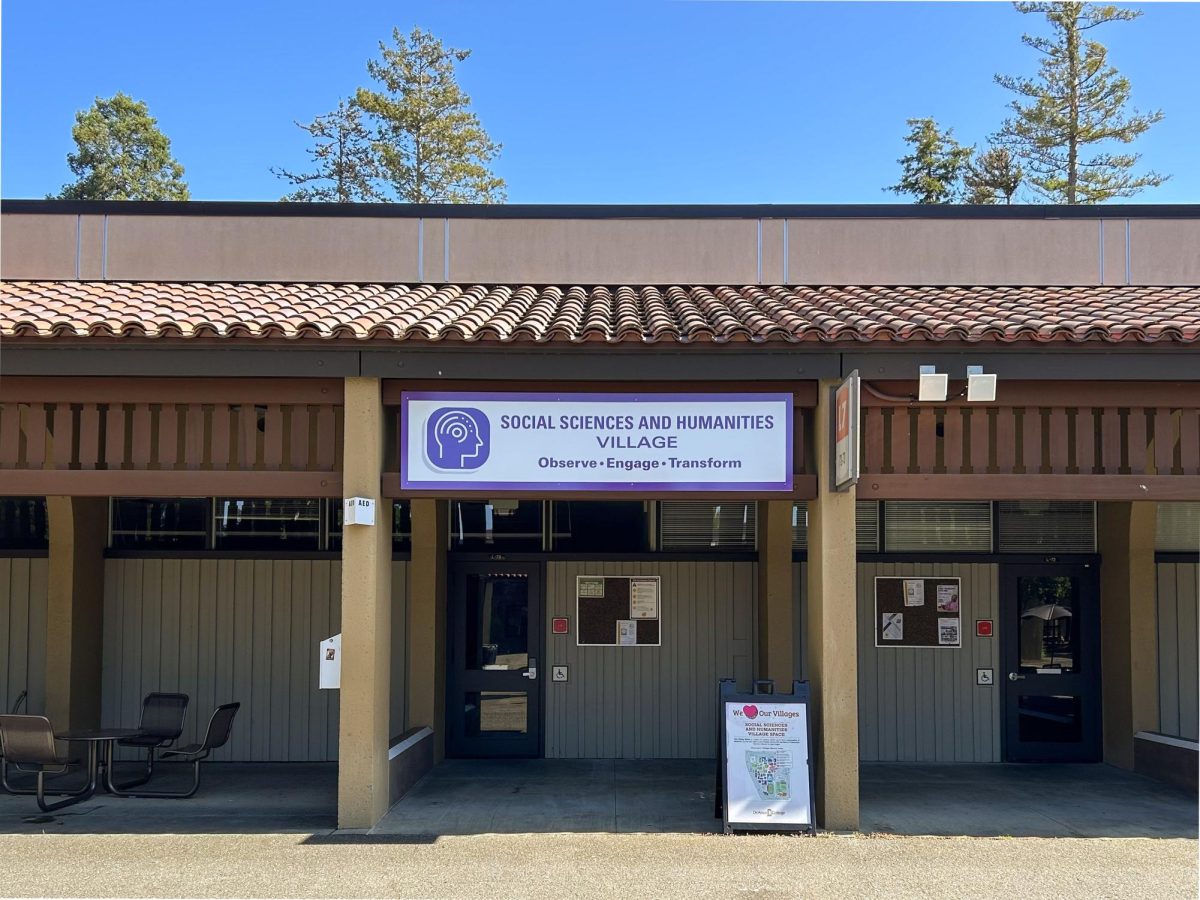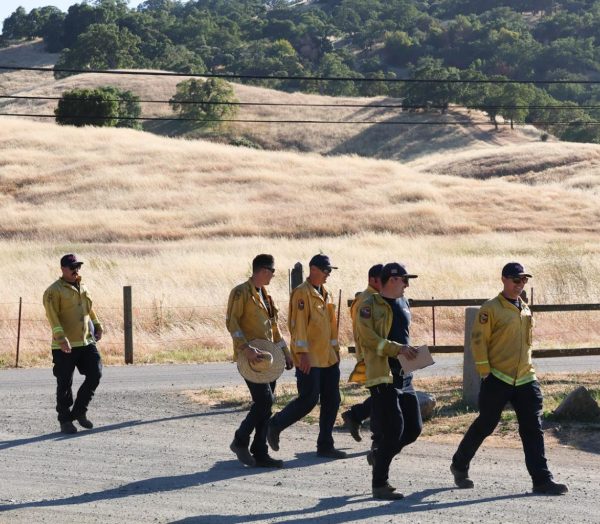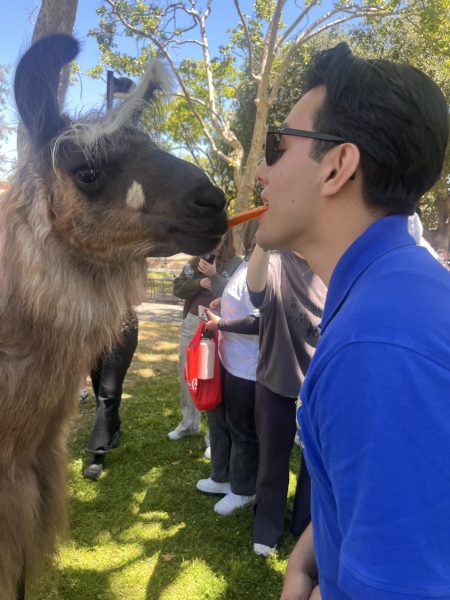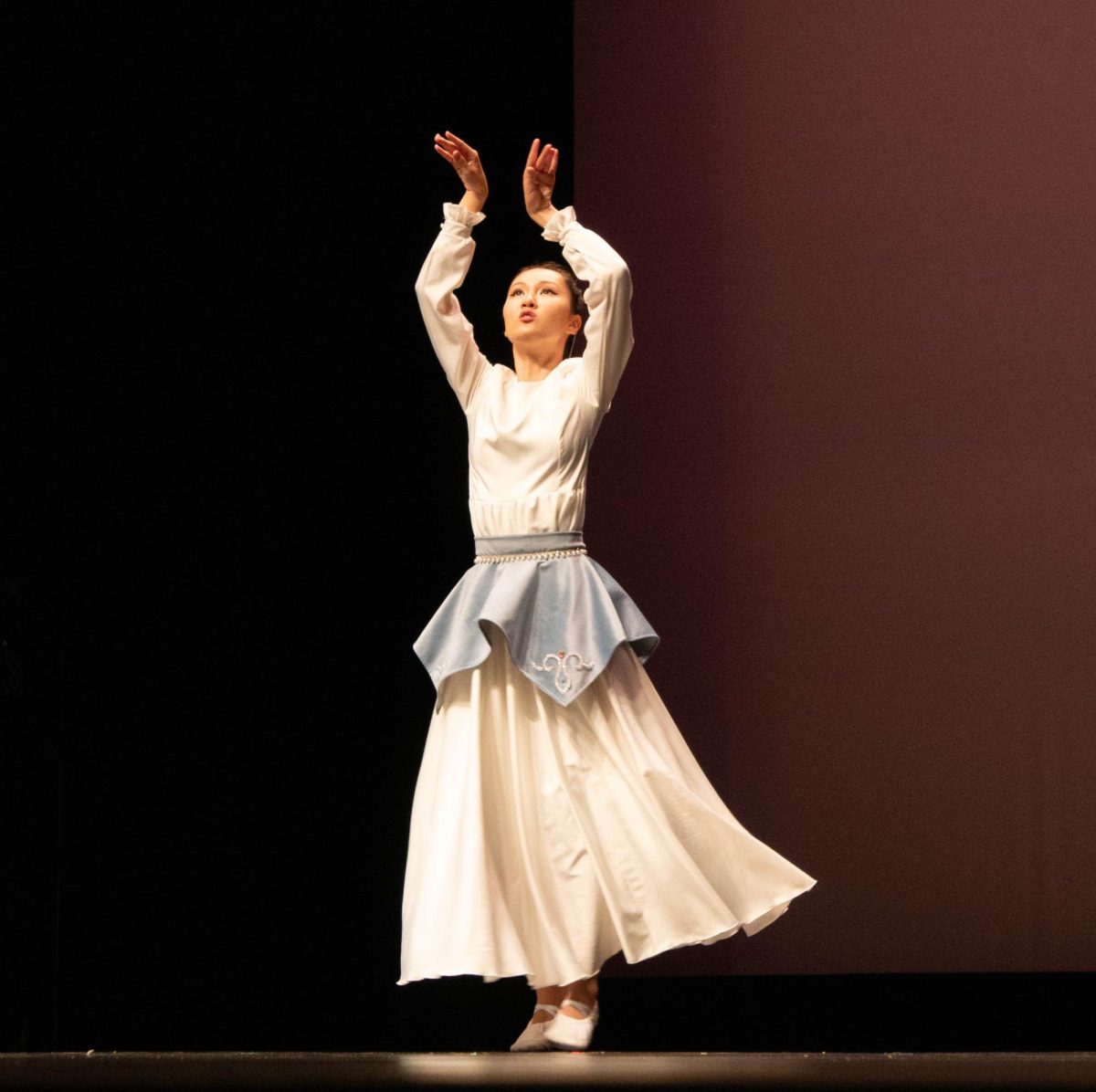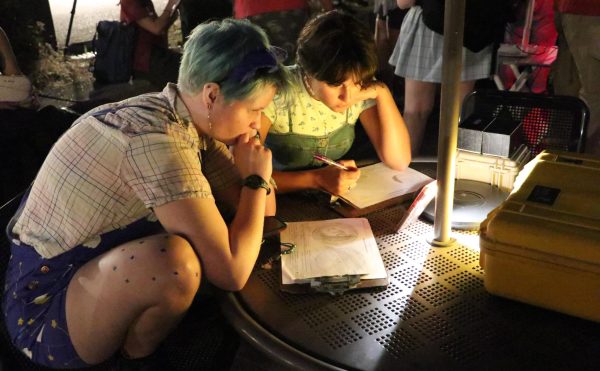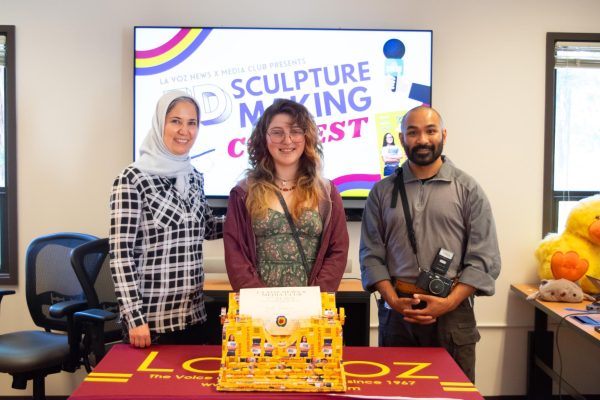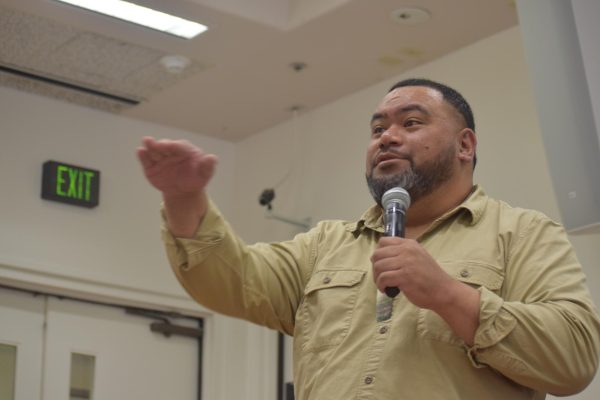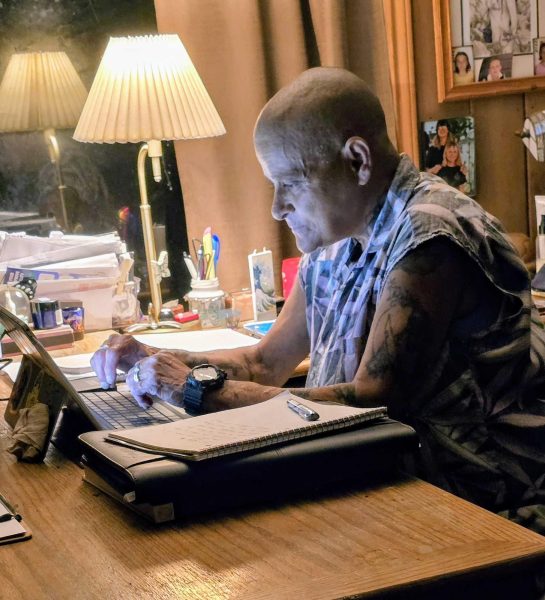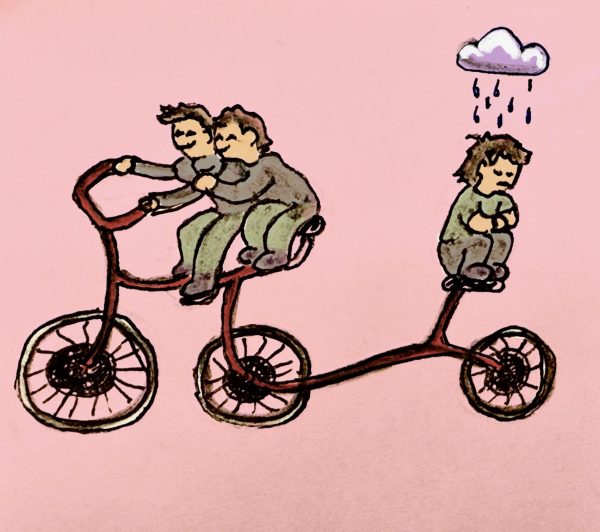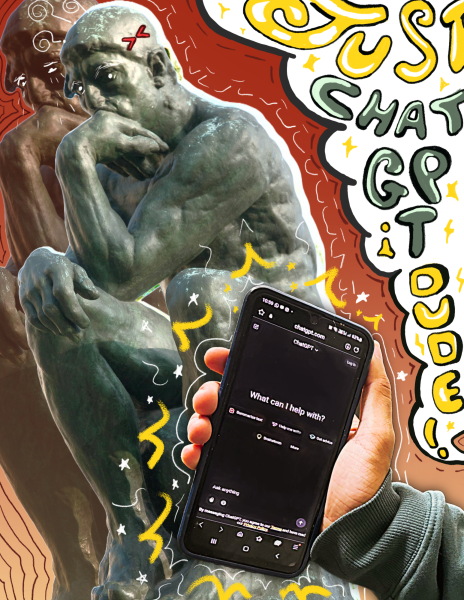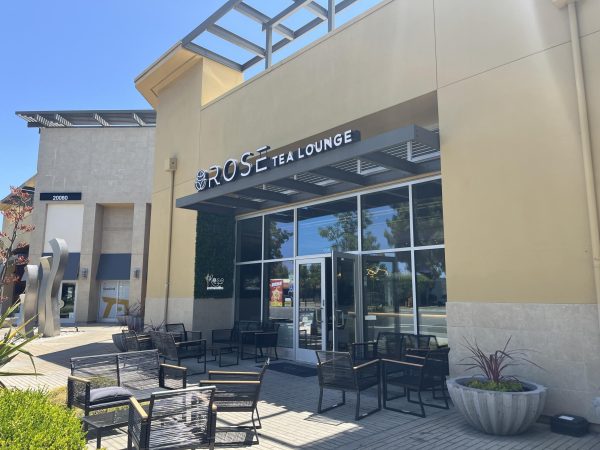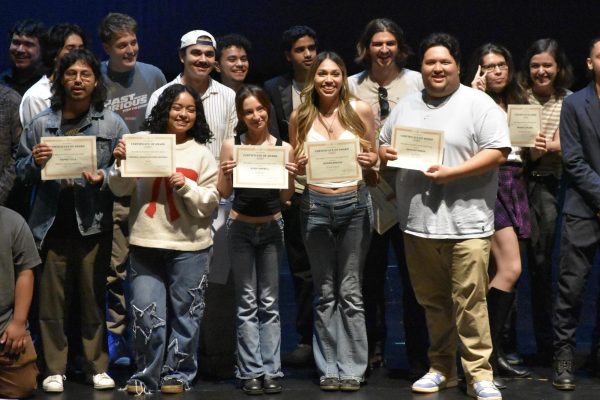How De Anza’s Creative Arts Division survived the pandemic
Professor Janet Shaw’s ballet students rehearse in the dance studio for the first time in one and a half years.
November 22, 2021
After teaching remotely for one and a half years, professor Janet Shaw’s ballet classes have moved back in-person. In class, her students usually file into the dance studio, pull on their pointe shoes and chat casually among themselves about how their days went so far. Then, they line up, moving in synchronization, continually observing and measuring their steps to make space for one another.
During the thick of the pandemic, Shaw conducted her ballet classes strictly online, demonstrating different steps to students within the confines of a Zoom window. To supplement her curriculum, she created a Canvas page for the first time, and found herself recording instructional videos, administering quizzes on technique and sharing videos of performances from other dance companies. She then spent her office hours correcting finer elements of their technique in what she calls “individual ballet check-ins.”
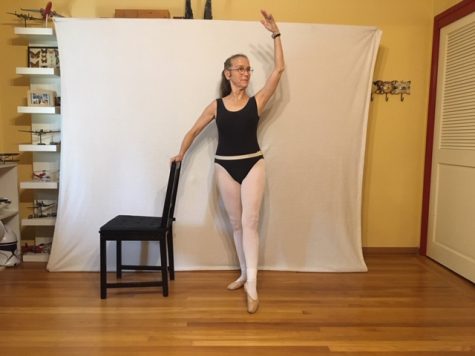
“I was much more verbally helpful than I normally am, and that seemed to work pretty well,” she said. “I actually had students that took the class three quarters in a row completely online, and they looked really good at the end of the quarter, so I was really thrilled.”
Under Shaw’s guidance, Jaimie Blair, 34, an anthropology major, worked her way through three levels of dance, two of them virtually and most recently, one quarter in-person. She said she hopes to apply these new skills at her work with clients in the personal training business that she runs out of her home.
“So much of fitness is just borrowing knowledge from other people,” Blair said. “The biggest takeaway from professor Shaw was being able to look at fitness from the eyes of a ballet dancer: slowing down, seeing big dramatic lines and being very beautiful instead of just doing the movement.”
Professor Hiroyo Kaneko, who teaches both digital and film photography, also sought to inspire her students and rework her curriculum in response to remote learning. Her students could not access the on-campus darkroom to develop film, so she placed a greater emphasis on developing content and concept in her students’ digital work. She said that her students used their smartphones and cameras to create slideshows and video projects, coming up with a variety of ideas even in self-isolation.
“Last spring, one student in Santa Clara recorded the Black Lives Matter protests happening outside her bedroom window,” Kaneko said. “She saw some really depressing and terrible things going on, but I believe that somehow, students started to see some kind of hope by creating their own projects.”
Karl Medina, 35, a photography major, has taken two classes with Kaneko, and said he learned more about his own tastes and techniques through the feedback she provided on his digital photography.
“If you present her a group of 10 photos, she’ll pick three or four of the best ones, and offer notes and suggestions,” Medina said. “She sees some of those things that you don’t see. Then from there, you listen to her coaching and get wonderful results after that. It feels good.”
Professor Ilan Glasman, the last full-time professor in the music department, worked before the pandemic to make sure students with different specializations got the instruction that they needed. In remote learning, he grappled with several other challenges related to everyday practices and performances in his choir performance classes. In addition to giving singers individual feedback, he somehow needed to bring his 40 students together into one ensemble.
To accomplish this, he worked with Sky Ward, 21, music major, to compile students’ individual singing parts together into one recording using Garageband software. The process was labor-intensive and it took over ten hours to complete.
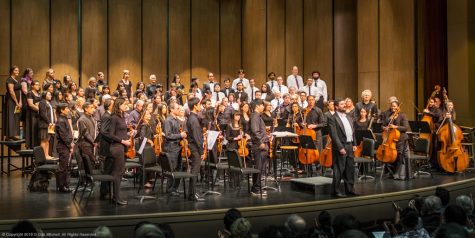
“When we’re in a room, it’s easier to hear each other and it’s easier to hear when someone else is making a mistake. A lot of small technical things make a choir work very well,” Ward said. “You can’t do it when you’re individually recording something and it makes it very difficult to get a full recording of a choir.”
This fall quarter, Glasman’s singing classes have moved back to in-person and his students are currently rehearsing for live performances set to take place in December. In practice and rehearsals, he asks them to wear specialized masks to breathe more easily and provides individual instruction from behind Plexiglass.
“I’m sure that the students are making more sacrifices than I realize, and bless them because they’re keeping the program alive,” he said. “Without them, we would have no classes. They believe in their music and they believe in themselves.”
Moving forward, dean Daniel Smith, who was appointed to head the Creative Arts Division in 2019, also acknowledged the sacrifices students made and said that his goal is to make students more aware of the choices available to them. Furthermore, he said that he hopes to prepare students for a job that they “love” after graduating De Anza College.
“Given the competitive nature of the business, I would always tell my students, ‘Try this now,’” he said. “Don’t be wondering, ‘What if?’ when it’s too late. Take your shot now.”



